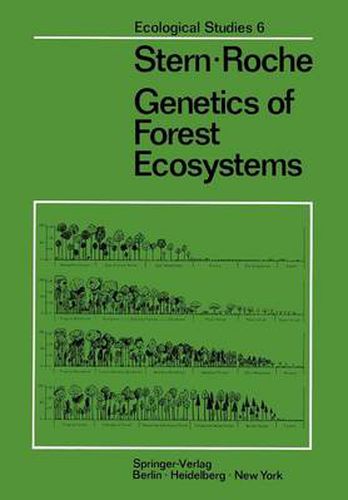Readings Newsletter
Become a Readings Member to make your shopping experience even easier.
Sign in or sign up for free!
You’re not far away from qualifying for FREE standard shipping within Australia
You’ve qualified for FREE standard shipping within Australia
The cart is loading…






This title is printed to order. This book may have been self-published. If so, we cannot guarantee the quality of the content. In the main most books will have gone through the editing process however some may not. We therefore suggest that you be aware of this before ordering this book. If in doubt check either the author or publisher’s details as we are unable to accept any returns unless they are faulty. Please contact us if you have any questions.
Throughout the world natural forest ecosystems have been, and are being massively disrupted or destroyed. The boreal forests of Canada are no more immune to man’s intervention than the tropical rain forests of Africa, and the day is rapidly approaching when natural forest ecosystems, undisturbed by man, will be found only as remnants in national parks and other protected areas. Yet where they continue to exist these ecosystems are an extraordinarily rich, though relatively neglected source of data that illuminate many aspects of the classic theory of evolution. The subject matter of this book is not, however, confined to natural forest ecosystems. Forest ecosystems under varying degrees of management, and man made forests are also a rich source of information on ecological genetics. In general, however, it can be said that the published evidence of this fact has not yet significantly penetrated the botanical literature. All too frequently it is confined to what might be termed forestry journals. It is hoped that this book will to some extent redress the balance, and draw attention to a body of published work which not only provides a basis for the rational management and conservation of forest ecosystems, but also complements the literature of ecological genetics and evolution. The first draft of Chapters I to V was written in German by the senior author and translated by E. K. MORGENSTERN of the Canadian Forestry Service.
$9.00 standard shipping within Australia
FREE standard shipping within Australia for orders over $100.00
Express & International shipping calculated at checkout
This title is printed to order. This book may have been self-published. If so, we cannot guarantee the quality of the content. In the main most books will have gone through the editing process however some may not. We therefore suggest that you be aware of this before ordering this book. If in doubt check either the author or publisher’s details as we are unable to accept any returns unless they are faulty. Please contact us if you have any questions.
Throughout the world natural forest ecosystems have been, and are being massively disrupted or destroyed. The boreal forests of Canada are no more immune to man’s intervention than the tropical rain forests of Africa, and the day is rapidly approaching when natural forest ecosystems, undisturbed by man, will be found only as remnants in national parks and other protected areas. Yet where they continue to exist these ecosystems are an extraordinarily rich, though relatively neglected source of data that illuminate many aspects of the classic theory of evolution. The subject matter of this book is not, however, confined to natural forest ecosystems. Forest ecosystems under varying degrees of management, and man made forests are also a rich source of information on ecological genetics. In general, however, it can be said that the published evidence of this fact has not yet significantly penetrated the botanical literature. All too frequently it is confined to what might be termed forestry journals. It is hoped that this book will to some extent redress the balance, and draw attention to a body of published work which not only provides a basis for the rational management and conservation of forest ecosystems, but also complements the literature of ecological genetics and evolution. The first draft of Chapters I to V was written in German by the senior author and translated by E. K. MORGENSTERN of the Canadian Forestry Service.